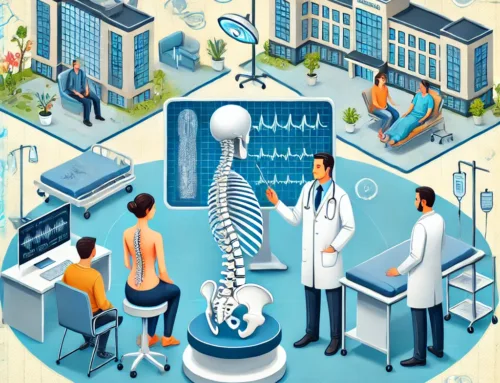Facing a diagnosis of a spinal tumor can be overwhelming for both patients and their families. Understanding the challenges associated with spinal tumors and knowing where to find support and resources is crucial for managing this condition effectively. This article explores the various aspects of navigating spinal tumors, highlighting the importance of support systems and providing essential resources for patients and their loved ones.
Understanding Spinal Tumors
What are Spinal Tumors?
Spinal tumors are abnormal growths that develop within or around the spinal cord or vertebrae. They can be benign (non-cancerous) or malignant (cancerous) and may cause a range of symptoms depending on their size and location.
Types of Spinal Tumors
- Intramedullary Tumors: These tumors grow within the spinal cord itself and are typically gliomas or astrocytomas.
- Extramedullary Tumors: These tumors develop outside the spinal cord but within the protective covering, such as meningiomas and schwannomas.
- Vertebral Tumors: These tumors affect the bones of the spine and can be either primary (originating in the spine) or secondary (metastasizing from other body parts).
Challenges Faced by Patients and Families
Physical Challenges
- Pain and Discomfort: Spinal tumors can cause severe back pain, nerve pain, and other discomforts.
- Mobility Issues: Depending on the tumor’s location, patients may experience difficulty walking, balancing, or performing daily activities.
- Neurological Symptoms: Tumors may lead to symptoms such as numbness, weakness, or paralysis.
Emotional and Psychological Challenges
- Anxiety and Depression: The diagnosis and treatment of spinal tumors can lead to significant emotional stress, anxiety, and depression.
- Uncertainty: Fear of the unknown and concerns about prognosis and treatment outcomes can weigh heavily on patients and families.
Also read Finding Relief: The Latest in Slipped Disk Treatment Options
Financial and Logistical Challenges
- Medical Costs: Treatment for spinal tumors can be expensive, including surgery, radiation therapy, and ongoing medical care.
- Travel and Accommodation: Patients may need to travel to specialized treatment centers, which can add to the logistical and financial burden.
Support Systems for Patients and Families
Medical Support
Multidisciplinary Care Teams
A team approach to treatment, involving neurosurgeons, oncologists, radiologists, and physical therapists, ensures comprehensive care for spinal tumor patients.
Pain Management Specialists
Specialists in pain management can help alleviate discomfort through medication, nerve blocks, and other techniques.
Emotional and Psychological Support
Counseling and Therapy
Individual and family counseling can help address emotional challenges, providing coping strategies and mental health support.
Support Groups
Joining support groups connects patients and families with others facing similar challenges, offering a sense of community and shared experience.
Practical Support
Financial Assistance Programs
Numerous organizations offer financial aid and resources to help cover the costs of treatment and related expenses.
Also read Understanding Disc Herniation: Causes, Symptoms, and Treatment
Caregiver Support Services
Resources for caregivers, including respite care and training, can help manage the demands of caring for a loved one with a spinal tumor.
Resources for Navigating Spinal Tumors
Educational Resources
Online Information
Trusted websites like the National Cancer Institute (NCI) and American Cancer Society provide detailed information on spinal tumors, treatment options, and managing side effects.
Patient Advocacy Organizations
Organizations such as the Spinal Cord Tumor Association offer educational materials, support networks, and advocacy for patients and families.
Practical Tools
Medical Transportation Services
Services that offer transportation to and from medical appointments can ease the burden of travel for patients.
Home Health Care Services
In-home medical care and support services can assist with daily living activities and medical needs, providing comfort and convenience.
Community Resources
Local Support Groups
Community-based support groups provide opportunities for in-person connection and shared experiences.
Volunteer Organizations
Volunteers can offer assistance with tasks such as household chores, meal preparation, and companionship, helping to lighten the load for families.
Also read From Fusion to Disc Replacement: The Spectrum of Spine Surgerie
Conclusion: Finding Strength and Support
Navigating the challenges of spinal tumors requires a comprehensive approach that addresses physical, emotional, and practical needs. By leveraging available support systems and resources, patients and their families can find strength and resilience in the face of this condition. Understanding that they are not alone and that help is available can make a significant difference in their journey toward managing and overcoming spinal tumors.
Note: We are also on WhatsApp, LinkedIn, and telegram, to get the latest news updates, Join our Channels. WhatsApp– Click here, to telegram – Click Here, and for LinkedIn– Click Here.











Get Social